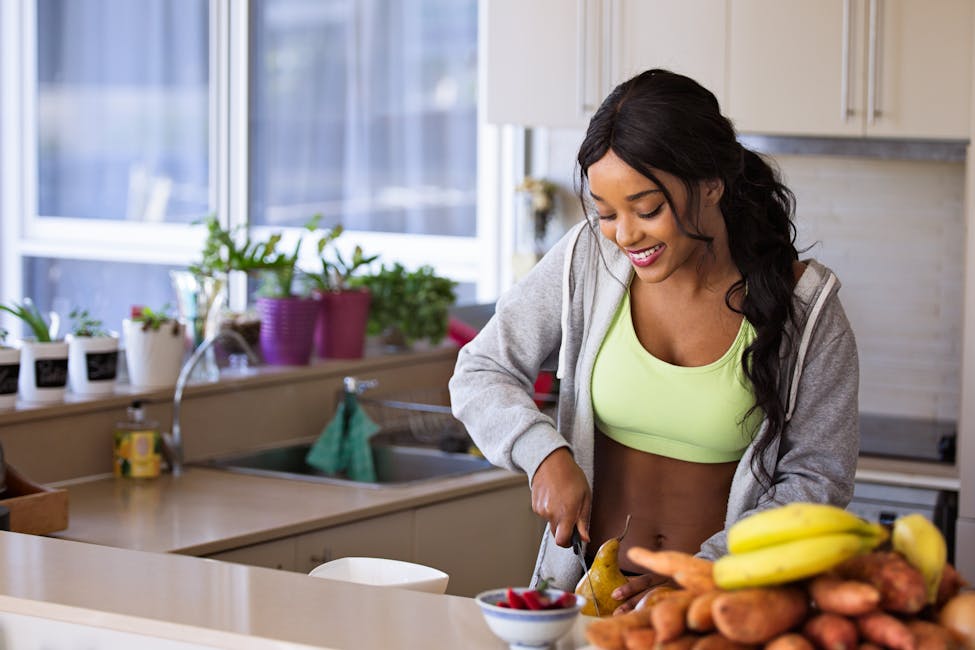
If you’re baking with abandon, join the quarantine club. This homey activity — and its sugar-laden results — have brought us great comfort during a time that otherwise has felt a bit out of control. At least we can kill some evening hours by perfecting our homemade banana bread, eating it for a temporary fix, and sharing it with family to create the communal eating experience we once had in the old world.
Baking bread has skyrocketed during our exceptional period of isolation; sharing recipes has been yet another way to stay connected. There’s been a run on sourdough starter at most bakeries. Baked goods are a wonderful metaphor for everything that we’re missing during quarantine: comfort, consistency, and community.
But as quarantine rules loosen and we slowly begin to move beyond the confines of home, it may be time to acknowledge why we’re therapy baking in the first place — and why it might be healthier to put those efforts to feel good toward our greater nutritional wellbeing.
Unconventional Quarantine Eating Habits
Emotional eating is a side effect of months spent detached from other humans and the outside world. By nature we are social beings — yes, even you introverts. Being cut off from extended family, friends, coworkers, and even the environments that allow us to connect with strangers and meet new people has taken a massive emotional toll.
A change in the way we interact with food is just one consequence of our global upheaval. Mood swings can lead to all kinds of new and unwanted interactions with food, from emotionally triggered over-eating to poor nutritional choices such as quick, convenient snacks versus whole foods.
With a lack of or disruption to daily routines, we might be munching more and skipping meals entirely, let alone well-balanced plates. Perhaps we’re substituting a warm-and-fuzzy Zoom call and cocktails for a real dinner. Or maybe too much time in front of the stove has left us burned out on cooking altogether.
Drinking is also on the rise, which is no surprise. A glass of wine sounds great at the end of a day of managing work and family at home — every. minute. of. the. day. Indeed, alcohol is an easy escape, a way to bury our heads in the sand, if you will.
We all know that over-eating and -drinking and generally making poor choices around what we put in our body is not a good long-term approach to happiness or health. It may have worked temporarily during the pandemic. But now many of us are dealing with the aftermath of these decisions, such as weight gain, lack of energy, blood sugar spikes and dips, and altered sleep and exercise habits.
But let’s not beat ourselves up too much. That’s not going to work either. Plus, those brownies were downright delicious while they lasted. Instead, approach getting back to healthy nutritional patterns the way you’d approach coming out of quarantine: slowly.
A Fresh Start: Post-Quarantine Nutrition
Here are some ideas for starting to reign in things that may have slipped in an upside-down world. Don’t think of this as a diet or something to constrain in your life, but rather a fresh start as you start fresh in your post-quarantine life. It might feel amazing to regain control over this important aspect of your life.
Shop better. Now that it’s not so scary to go into a grocery store or wonder whether there will be any ingredients left on the shelves, make your outings more intentional. Build a healthy list of basics and have fun picking out summer’s freshest fruits and vegetables. Add in a farmer’s market visit. Some open-air food shopping might just do the trick.
Ritualize a meal. Instead of relying on something frozen last-minute, choose one meal and make it a ritual. For most that will be dinner, which can include some mood music (I’ve been cooking to the “Chill Dinner” playlist on Spotify), a candle, table settings with real silverware, and a healthy main course. If that time of day is hard, try brunch when your teenagers wake up or an al fresco lunch as a family break from work and play.
Don’t just cook, chop. A healthy meal or snack does not need to be complicated. In fact, often the most nutritious choices are raw, unprocessed foods. When you bake or boil, you begin to strip the best elements. Here’s an idea: As a snack or dessert, my whole family eats “banana goodness” — banana sliced in half, spread with almond butter, and topped with dark chocolate chips. A simple meal could be sliced eggplant seared on the grill and topped with goat cheese and balsamic. See, easy does it.
Get out to eat. As restaurants open back up, decide what parameters you’re comfortable with and go for it. The change of scenery and eating in a communal space can do wonders for our mindset toward food right now. It can be tempting to take comfort food to go but don’t go there. Make a reservation for an outdoor table and eat smart and slow, among friends. Or pick up picnic-style foods and savor unhurriedly in the park. Food with a view is nourishing for the mind and body.
Consider a kickstart. As we mentioned in our last blog on mood, making a lifestyle change now could be the boost you need to refocus on a vision for the future rather than a virus we can’t even see. For example, I’ve used intermittent fasting during the weekdays to focus my work life. Only eating between noon and 8 p.m. frees up my whole morning to drill down on deadlines or exercise. You could try juicing for a weekend for a super-fresh start or get some bloodwork done to see where you can dial in your nutrition and supplementation goals.
Pay attention. Let the past few months go, and start focusing on tomorrow. So what if you ate a dozen doughnuts one day or downed a pint of ice cream with the kids? It’s over. You can only control what food choices come next. Start mindfully. Next time you reach for a sugary treat, just stop and notice. You won’t starve in that hard moment. Ask one question: Do I need this or want this right now? If it’s the latter, walk away from the fridge. Literally, take a short walk, pet your dog, make some tea, or call a friend.
However, you choose to move forward with a post-pandemic nutritional plan, make it a choice, not a chore. Health is all about habit, and you have the courage to build some smart ones. Stay with Quicksilver Scientific as we delve into our next quarantine topic: sleep — why we’re not getting enough or the right kind — and how we can soundly slumber again.
This blog is part of our Quarantine Recovery Series. If you enjoyed this post, you may be interested in our previous blogs from this series:




